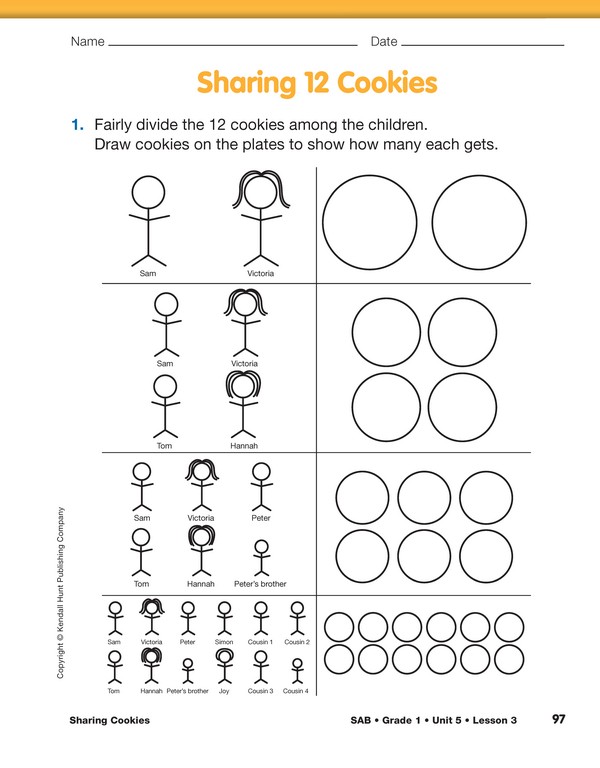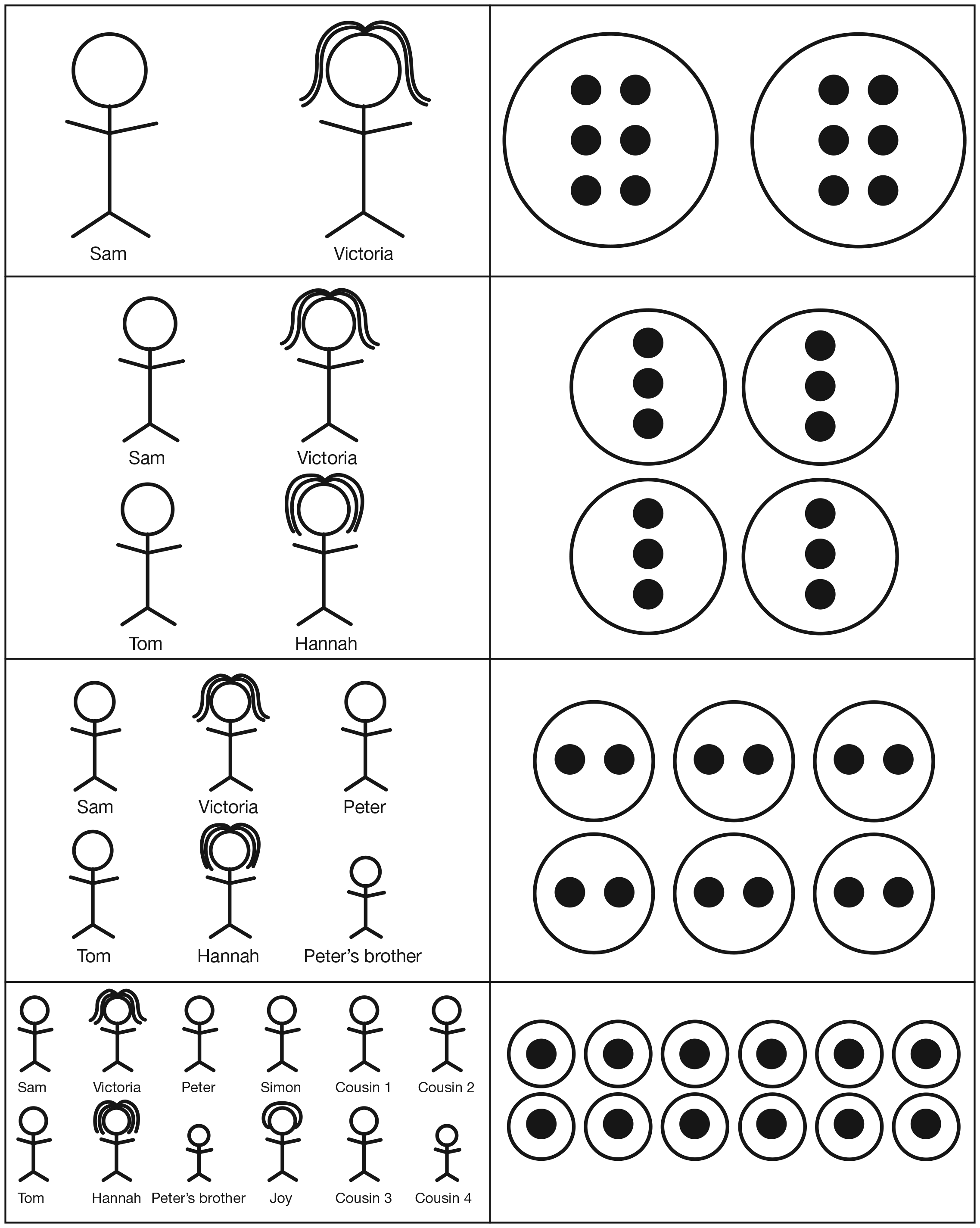Sharing Cookies
Est. Class Sessions: 2Developing the Lesson
Part 1: Partitioning Numbers into Groups
Read The Doorbell Rang. The Doorbell Rang by Pat Hutchins is an effective introduction to partitioning numbers into groups. The story involves sharing one dozen home-baked cookies among different numbers of children so that each one gets a fair share. Read the story to the students.
As you read, ask students to think about ways to share the cookies:
Share 12 Cookies. Give each student pair twelve counters and 12 small paper plates. Direct students to look at Question 1 on the Sharing 12 Cookies page in the Student Activity Book. Reread the story, this time pausing each time a different number of children rings the doorbell. Have student pairs use their plates to show the number of children sharing and their counters to show the number of cookies in each child’s share. Ask students to record their work on the plates in Question 1. See Figure 1. Emphasize the importance of giving each child a fair share.
As students are working in pairs, monitor students to see what strategies they are using. If students are unable to find a strategy for solving partitioning problems, encourage them to try the strategy of passing out one cookie at a time until all the cookies have been shared.
Ask:
Possible strategies students might use include:
- Guessing the number of cookies in each share, checking to see if it is correct, then adjusting the number in each share so that each child gets the same number.
- Passing the cookies out by a given number such as two or three cookies at a time and making adjustments so that each child gets a fair share.
- Using addition to determine the number of cookies in each fair share. (6 + 6 = 12)
- Passing out one cookie at a time until all the cookies have been shared.
For each problem, have several students share their work with the class to highlight the different strategies students can use to partition numbers.















